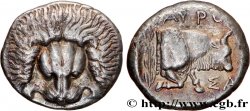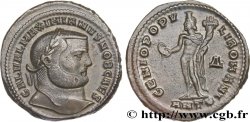Live auction - fme_886024 - SECOND EMPIRE Médaille, Palais de l’Exposition Universelle au champ de Mars
You must signin and be an approved bidder to bid, LOGIN TO BID. Accounts are subject to approval and the approval process takes place within 48 hours. Do not wait until the day a sale closes to register. Clicking on "BID" constitutes acceptance of the terms of use of cgb.fr private live auctions.
Bids must be placed in whole Euro amounts only. The sale will start closing at the time stated on the item description; any bids received at the site after the closing time will not be executed. Transmission times may vary and bids could be rejected if you wait until the last second. For further information check the Live auction FAQ
All winning bids are subject to a 18% buyer’s fee.
All winning bids are subject to a 18% buyer’s fee.
| Estimate : | 80 € |
| Price : | 40 € |
| Maximum bid : | 80 € |
| End of the sale : | 17 December 2024 14:51:02 |
| bidders : | 1 bidder |
Type : Médaille, Palais de l’Exposition Universelle au champ de Mars
Date: 1867
Mint name / Town : 75 - Paris
Metal : gilt copper
Diameter : 50 mm
Orientation dies : 12 h.
Weight : 44,34 g.
Edge : lisse
Puncheon : sans poinçon
Coments on the condition:
Médaille dorée présentant de l’usure sur les reliefs. Présence de coups et rayures, notamment sur la tranche
Obverse
Obverse legend : NAPOLEON LOUIS EUGENE - PRINCE IMPERIAL PRESIDENT.
Obverse description : Tête à gauche du prince impérial dans le médaillon à l’exergue du Palais du Champ de Mars, le tout entouré d’une guirlande de chêne. Blason tourelé de la ville de Paris à 12 heures. Signé : .
Reverse
Reverse legend : SOUS LE REGNE DE / NAPOLEON III / A ETE EDIFIE DANS / LE CHAMP DE MARS / LE PALAIS DE / L’EXPOSITION / UNIVERSELLE / PARIS 1867 / LE PRINCE IMPERIAL / PRESIDENTA.
Reverse description : Parchemin timbré d’une légende en 10 lignes sous un aigle impérial, entre une charrue et un caducée. Le tout est entouré d’une guirlande de chêne au dessus du blason tourelé de la ville de Paris.








 Report a mistake
Report a mistake Print the page
Print the page Share my selection
Share my selection Ask a question
Ask a question Consign / sell
Consign / sell
 Full data
Full data















